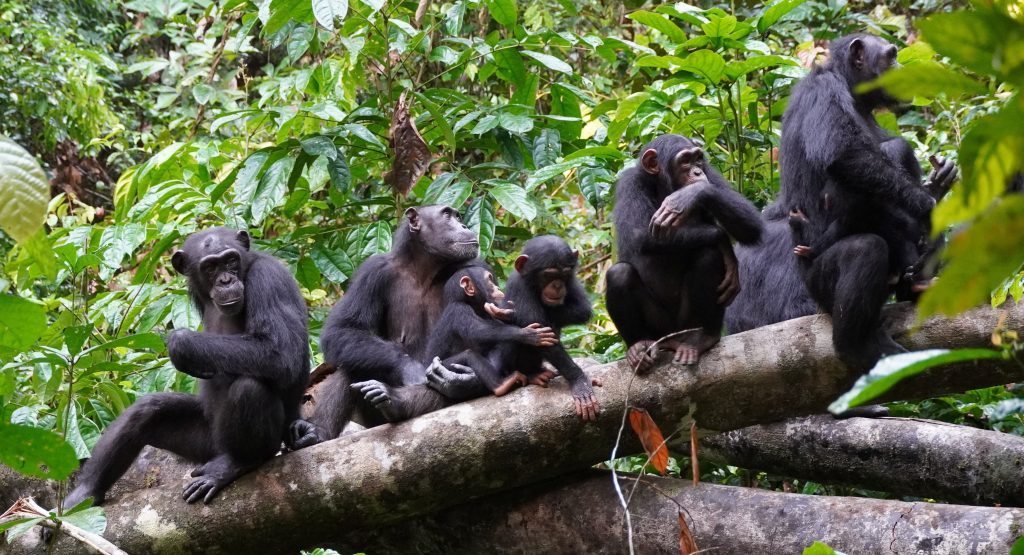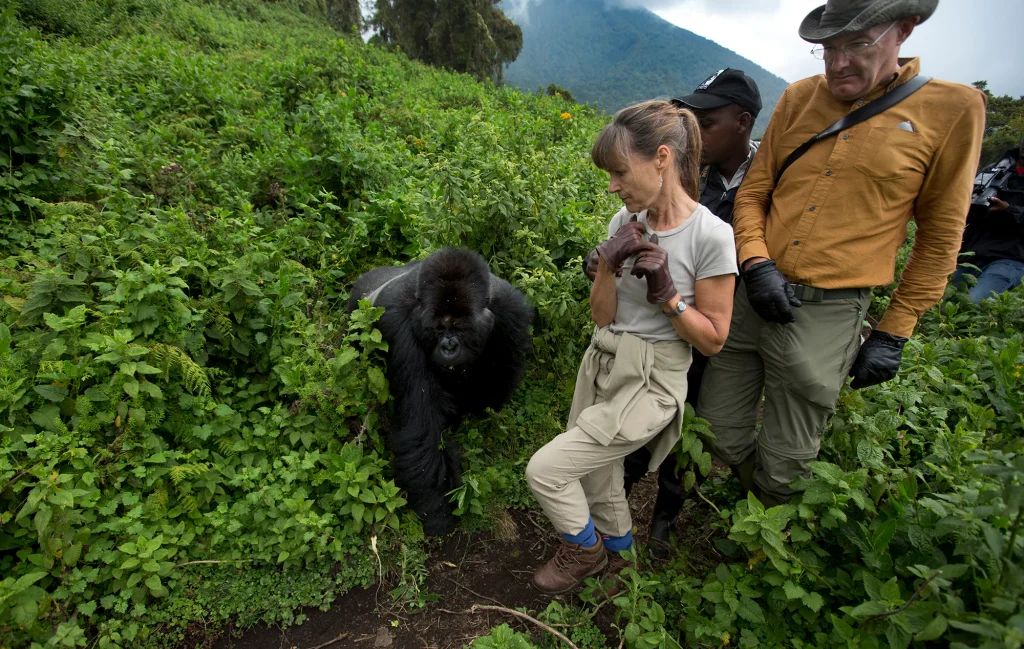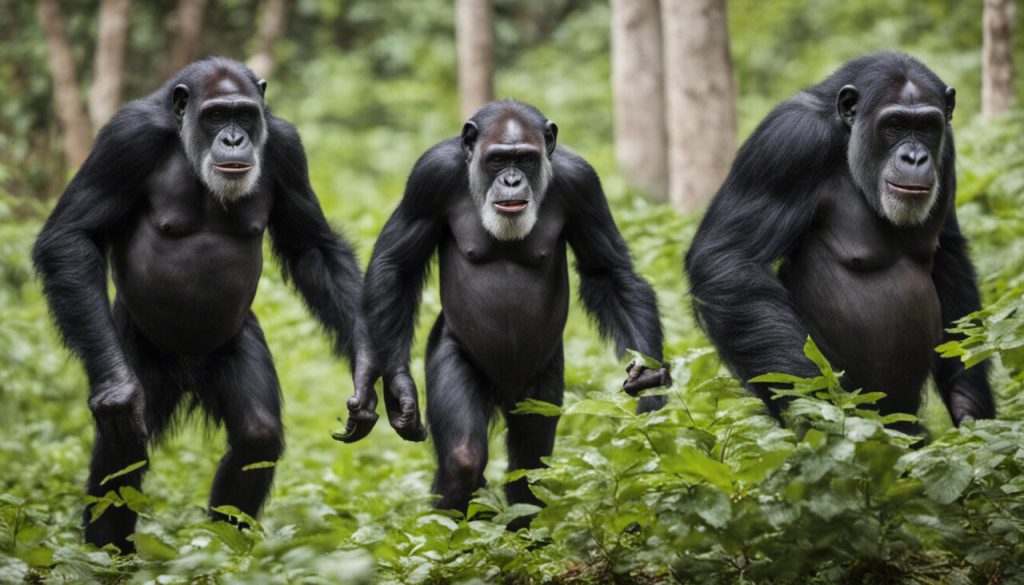

Certainly! East Africa is home to several fascinating primate species, each adapted to different habitats ranging from dense rainforests to open savannas. Here are some of the key primate species found in East Africa:
1. Chimpanzees
– Distribution: Chimpanzees (Pan troglodytes) are found in several countries in East Africa, including Uganda, Tanzania, and parts of Kenya.
– Habitat: They inhabit both tropical rainforests and moist woodlands, preferring areas with dense vegetation and access to water sources.
– Behavior: Chimpanzees are highly intelligent and social animals, living in communities that range in size from 20 to over 100 individuals. They are known for their use of tools, complex social hierarchies, and hunting strategies.
– Conservation: Chimpanzees are classified as endangered by the IUCN Red List due to habitat loss, fragmentation, and hunting for bushmeat. Conservation efforts focus on protecting their habitats through national parks and reserves, community-based conservation initiatives, and research to better understand their ecological needs and behaviors.
2. Mountain Gorillas
– Distribution: Mountain gorillas (Gorilla beringei beringei) are found in the Virunga Massif (shared between Uganda, Rwanda, and the Democratic Republic of Congo) and the Bwindi Impenetrable Forest in Uganda.
– Habitat: They inhabit montane and bamboo forests at altitudes ranging from 2,200 to 4,300 meters.
– Behavior: Mountain gorillas live in stable family groups led by a dominant silverback male, with group sizes averaging around 10 individuals. They are herbivores, feeding mainly on leaves, shoots, and fruits.
– Conservation: Mountain gorillas are critically endangered, with populations rebounding thanks to conservation efforts including habitat protection, anti-poaching patrols, and regulated tourism through gorilla trekking permits. The IUCN Red List recently downgraded their status from critically endangered to endangered, reflecting successful conservation efforts.
3. Eastern Lowland Gorillas
– Distribution: Also known as Grauer’s gorillas (Gorilla beringei graueri), they are found in the eastern Democratic Republic of Congo.
– Habitat: They inhabit lowland tropical forests.
– Behavior: Similar to mountain gorillas in social structure, living in stable family groups led by a dominant silverback.
– Conservation: Eastern lowland gorillas are critically endangered due to habitat loss from logging, mining, and civil unrest in the region. Conservation efforts include habitat protection, community-based conservation initiatives, and research to monitor and protect remaining populations.
4. Golden Monkeys
– Distribution: Found in the Virunga Mountains of Rwanda, Uganda, and the Democratic Republic of Congo.
– Habitat: They inhabit bamboo forests at higher altitudes.
– Behavior: Golden monkeys live in large social groups and are known for their bright golden-orange fur. They are primarily herbivorous, feeding on bamboo shoots and leaves.
– Conservation: Golden monkeys are endangered due to habitat loss and fragmentation. Conservation efforts focus on protecting their bamboo forest habitats, research to understand their ecology and behaviors, and sustainable tourism initiatives to generate income for local communities while conserving their habitats.
5. Colobus Monkeys
– Distribution: Several species of colobus monkeys are found in East Africa, including the black-and-white colobus (Colobus guereza) and the red colobus (Piliocolobus spp.).
– Habitat: They inhabit a variety of forest types, from lowland rainforests to montane forests.
– Behavior: Colobus monkeys are arboreal and live in multi-male, multi-female groups. They are folivores, feeding primarily on leaves supplemented with fruits and flowers.
– Conservation: While some species are more common and adaptable, others are threatened by habitat loss from deforestation, agriculture, and human-wildlife conflict. Conservation efforts include habitat protection, reforestation projects, and initiatives to mitigate human-wildlife conflict.
6. Vervet Monkeys
– Distribution: Found in savannas, woodlands, and riverine forests across East Africa.
– Habitat: Vervet monkeys are adaptable and can live in both natural and human-modified landscapes.
– Behavior: They live in multi-male, multi-female groups and are known for their social behaviors, vocalizations, and distinct facial features. They are omnivorous, feeding on fruits, leaves, insects, and occasionally small vertebrates.
– **Conservation**: Vervet monkeys are not currently threatened but face risks from habitat destruction, human encroachment, and persecution as agricultural pests in some areas. Conservation efforts include habitat conservation, public education about their ecological role, and community-based initiatives to reduce human-wildlife conflict.
Conservation Challenges
Conservation of primates in East Africa faces significant challenges including habitat loss and fragmentation, illegal wildlife trade, diseases (such as Ebola), and human-wildlife conflict. Efforts to protect these species often involve a combination of protected area management, community engagement and empowerment, research and monitoring, and sustainable tourism practices that benefit local communities while safeguarding primate habitats.

